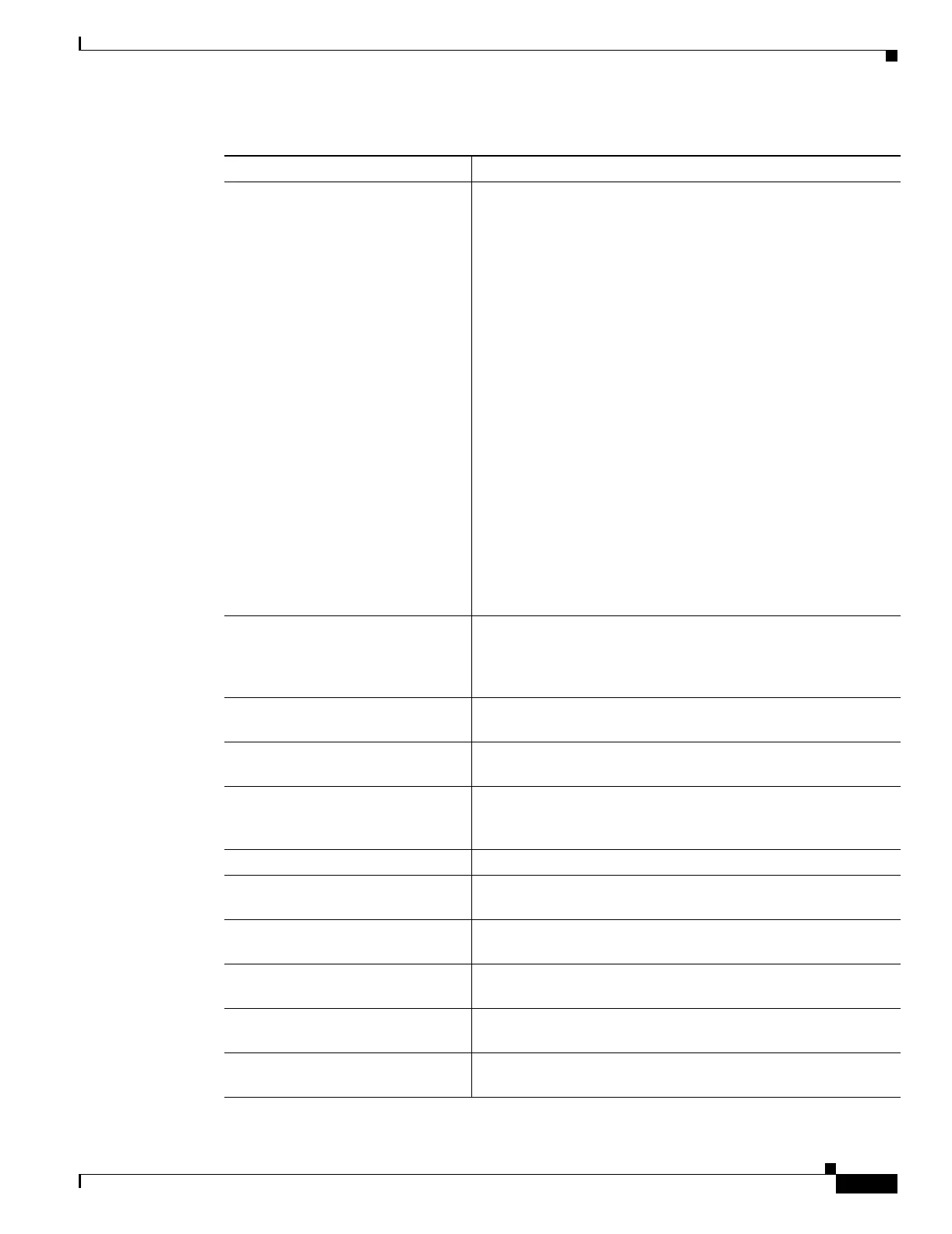22-31
Cisco ONS 15454 Procedure Guide, R5.0
October 2005
Chapter 22 DLPs A500 to A599
DLP-A533 Create Ethernet RMON Alarm Thresholds
etherStatsCollisionFrames An estimate of the total number of collisions on this Ethernet
segment. The value returned will depend on the location of the
RMON probe. Section 8.2.1.3 (10Base5) and Section 10.3.1.3
(10Base2) of the IEEE 802.3 standard state that a station must
detect a collision, in the receive mode, if three or more stations
are transmitting simultaneously. A repeater port must detect a
collision when two or more stations are transmitting
simultaneously. Thus, a probe placed on a repeater port could
record more collisions than a probe connected to a station on the
same segment.
Probe location plays a much smaller role when considering
10BaseT. Section 14.2.1.4 (10BaseT) of the IEEE 802.3 standard
defines a collision as the simultaneous presence of signals on the
DO and RD circuits (transmitting and receiving at the same
time). A 10BaseT station can only detect collisions when it is
transmitting. Thus, probes placed on a station and a repeater,
should report the same number of collisions.
An RMON probe inside a repeater should report collisions
between the repeater and one or more other hosts (transmit
collisions as defined by IEEE 802.3k) plus receiver collisions
observed on any coaxial segments to which the repeater is
connected.
etherStatsDropEvents The total number of events in which packets were dropped by the
probe due to lack of resources. This number is not necessarily the
number of packets dropped; it is just the number of times this
condition has been detected.
etherStatsJabbers Total number of octets of data (including bad packets) received
on the network
etherStatsMulticastPkts Total number of good packets received that were directed to a
multicast address, not including packets directed to the broadcast
etherStatsOversizePkts Total number of packets received that were longer than
1518 octets (excluding framing bits, but including FCS octets)
and were otherwise well formed
etherStatsUndersizePkts Number of packets received with a length less than 64 octets
etherStatsFragments Total number of packets that are not an integral number of octets
or have a bad FCS, and that are less than 64 octets long
etherStatsPkts64Octets Total number of packets received (including error packets) that
were 64 octets in length
etherStatsPkts65to127Octets Total number of packets received (including error packets) that
were 65 to 172 octets in length
etherStatsPkts128to255Octets Total number of packets received (including error packets) that
were 128 to 255 octets in length
etherStatsPkts256to511Octets Total number of packets received (including error packets) that
were 256 to 511 octets in length
Table 22-5 Ethernet Threshold Variables (MIBs) (continued)
Variable Definition

